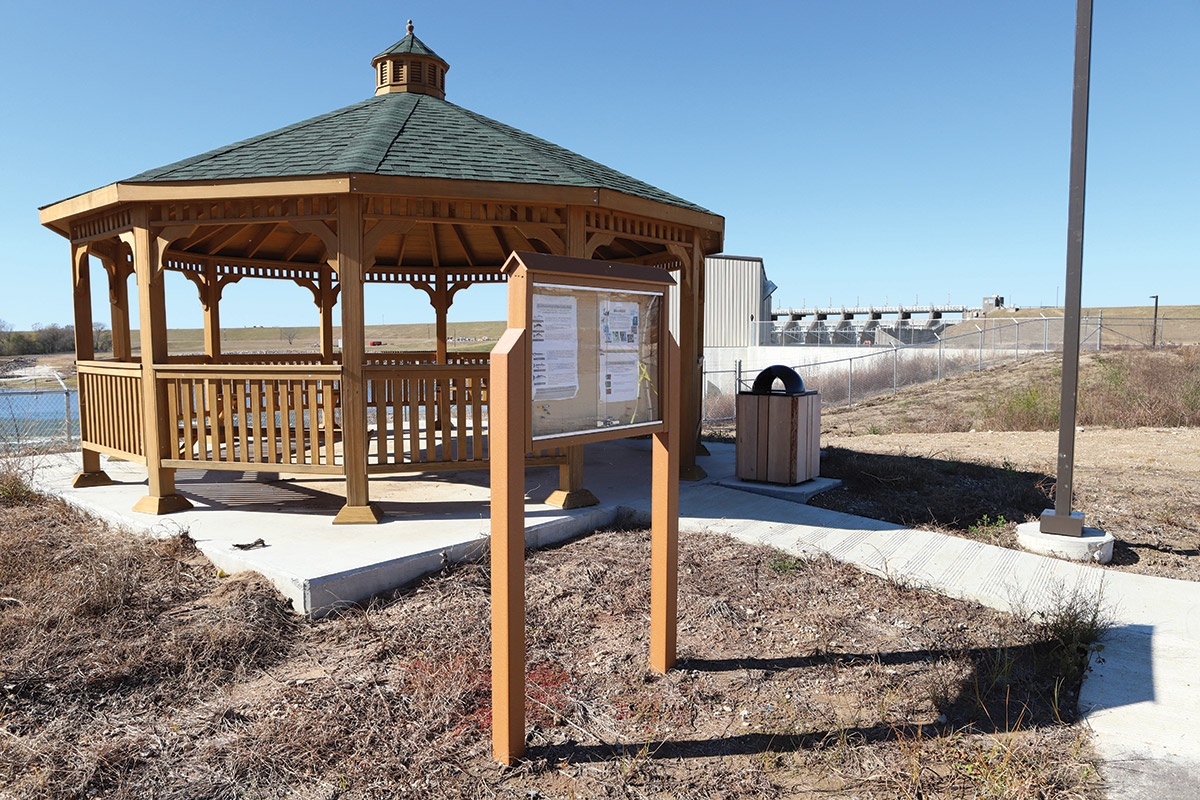After eight years of planning, designing and building—plus flooding delays from Hurricane Harvey—the R.C. Thomas Hydroelectric Project on Lake Livingston is now operational.
The project will generate enough clean energy to serve approximately 12,000 households in East Texas.
East Texas Electric Cooperative, a not-for-profit generation and transmission cooperative headquartered in Nacogdoches, owns and operates the plant. ETEC’s mission is to provide low-cost, reliable power to its seven not-for-profit electric distribution cooperatives, including Sam Houston Electric Cooperative, and to another generation and transmission cooperative serving three distribution co-ops. ETEC provides power to 330,000 households and businesses through its distribution co-ops across 46 counties in East Texas.
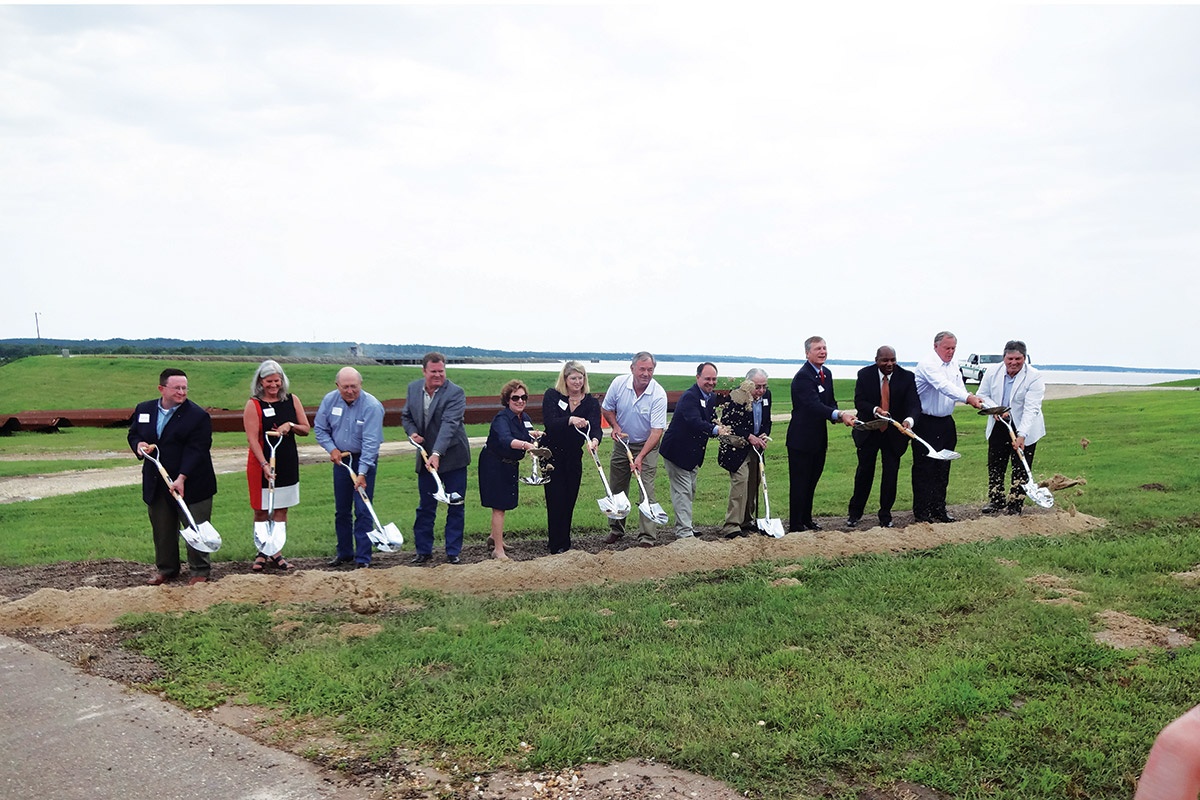
U.S. Rep. Brian Babin and officials from Polk and San Jacinto counties, the city of Houston, Trinity River Authority, and East Texas Electric Cooperative break ground for the R.C. Thomas Hydroelectric Plant on Lake Livingston on May 27, 2015.
Sam Houston Electric Cooperative
Groundbreaking for the R.C. Thomas project took place May 27, 2015, on the Trinity River Authority grounds at Lake Livingston Dam. U.S. Rep. Brian Babin was the keynote speaker for the event, which was also attended by representatives from the TRA and the city of Houston, local elected officials, and directors and delegates from area electric cooperatives.
The hydroelectric plant will annually offset approximately 64,000 tons of carbon dioxide emissions from fossil fuel power-generating plants, according to L.A. Williams, ETEC director of engineering.
The plant draws power from three 8-megawatt Kaplan turbine-driven generators, with a total capacity of approximately 24 MW, and is expected to generate roughly 124,000 megawatt-hours of electricity on an annual basis. The electricity generated goes immediately into the power grid serving the region.
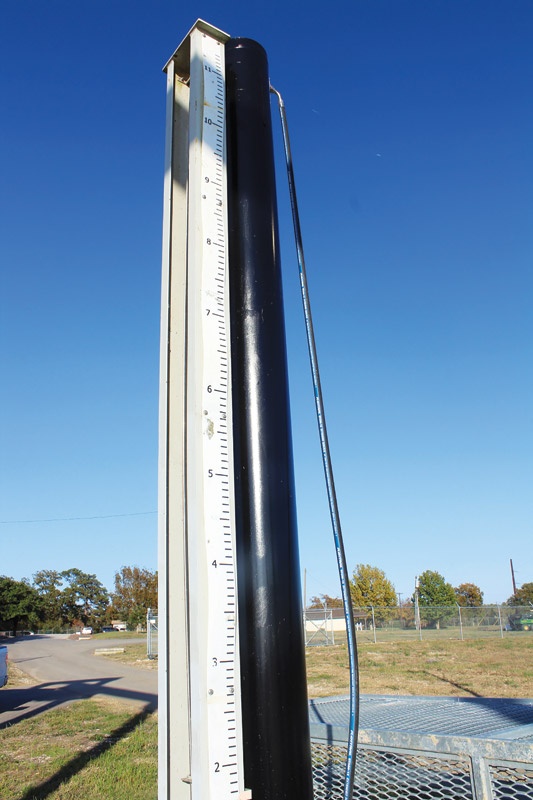
The intake gates are raised and lowered by a series of hydraulic lifts located above the intake. The operators can see how high the gates are raised by noting the footage marks on any of three hydraulic arms, one of which is shown here.
Sam Houston Electric Cooperative
Hydroelectric power has been in use for 150 years, but harnessing the power of flowing water dates back thousands of years. The Greeks used water wheels for grinding wheat into flour more than 2,000 years ago. Much later, as America was beginning to flourish, the power of flowing water was used to saw wood and eventually power the country’s early textile mills and manufacturing plants. During Franklin Roosevelt’s New Deal, hydroelectric dams were built throughout the nation, providing inexpensive power not only to big cities but to rural areas as well.
In Texas the relatively gentle terrain and low rainfall generally do not allow for much hydroelectric power to be generated, but in the late 1960s and early 1970s, construction of dams began along many of the major rivers in Texas, creating reservoirs that would serve the rapidly growing population of the state. As a result, most of the large lakes in Texas, including Lake Conroe, Lake Livingston and Lake Sam Rayburn, are all human-made. Texas has more than two dozen hydroelectric plants along the system of lakes, rivers and dams that traverse the state. Many lakes and reservoirs in Texas were created by dams, including 31 major reservoirs along just the Trinity River and its branches and tributaries.
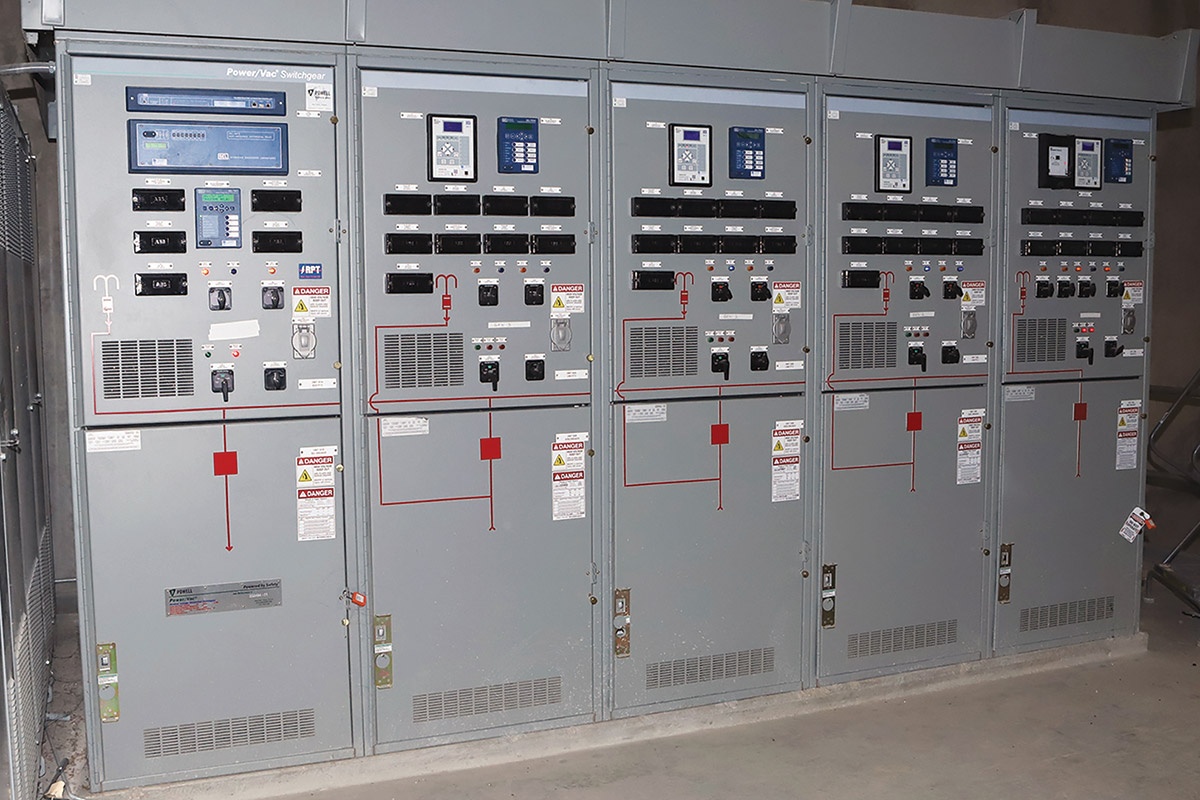
The control panel that continuously monitors input and output from the turbines is housed in a secure area above the spillway.
Sam Houston Electric Cooperative
The Rural Electrification Act of 1936, which brought electricity to 90% of the country’s rural population by 1960, was passed in part because of the influence of Sam Rayburn, the former speaker of the house and the East Texas lake’s namesake.
As a member of the Sam Houston EC Board of Directors for more than 40 years, R.C. Thomas, though not an elected official, was also influential in the electrification of rural East Texas.
One of the agencies involved with the Lake Livingston project is the TRA. Created by the Texas Legislature in 1955, the TRA is a conservation and reclamation district providing water and wastewater treatment, along with recreation and reservoir facilities, for municipalities within the nearly 18,000-square-mile Trinity River basin, including Lake Livingston.
Construction of the dam began in 1966 and finished three years later. As the second-largest lake entirely within Texas (Lake Sam Rayburn is the largest), Lake Livingston is owned and operated by the TRA under contract with the city of Houston, which uses most of the water sent downstream.
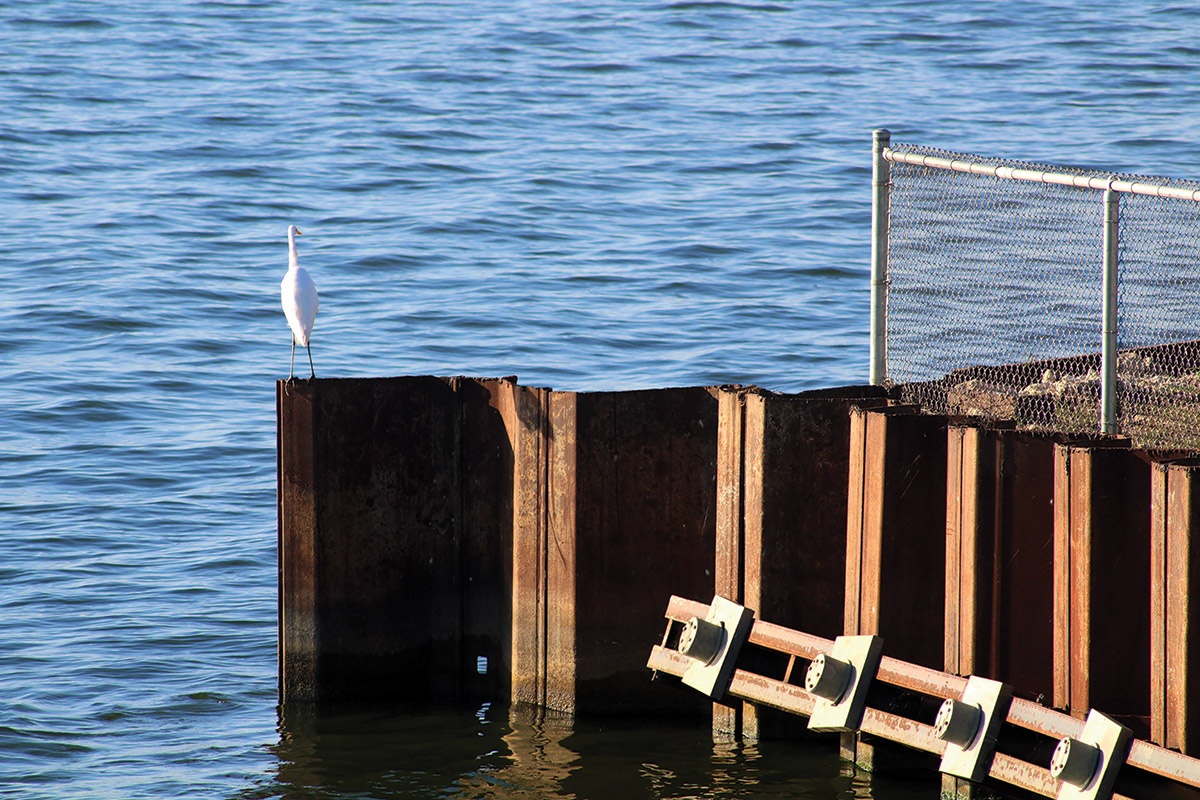
An egret sits atop the intake barrier, which keeps boaters from venturing too close to the intake gates.
Sam Houston Electric Cooperative
Some lake residents were concerned that the hydroelectric project would affect the level of the lake, which is not the case.
“Plant operation is typically referred to as ‘run of the river’ and will not interfere with reservoir operations or affect lake level,” Williams said. “The plant will only utilize the normal discharges of water by the TRA that would normally go over the spillway and instead divert the water through the power plant.”
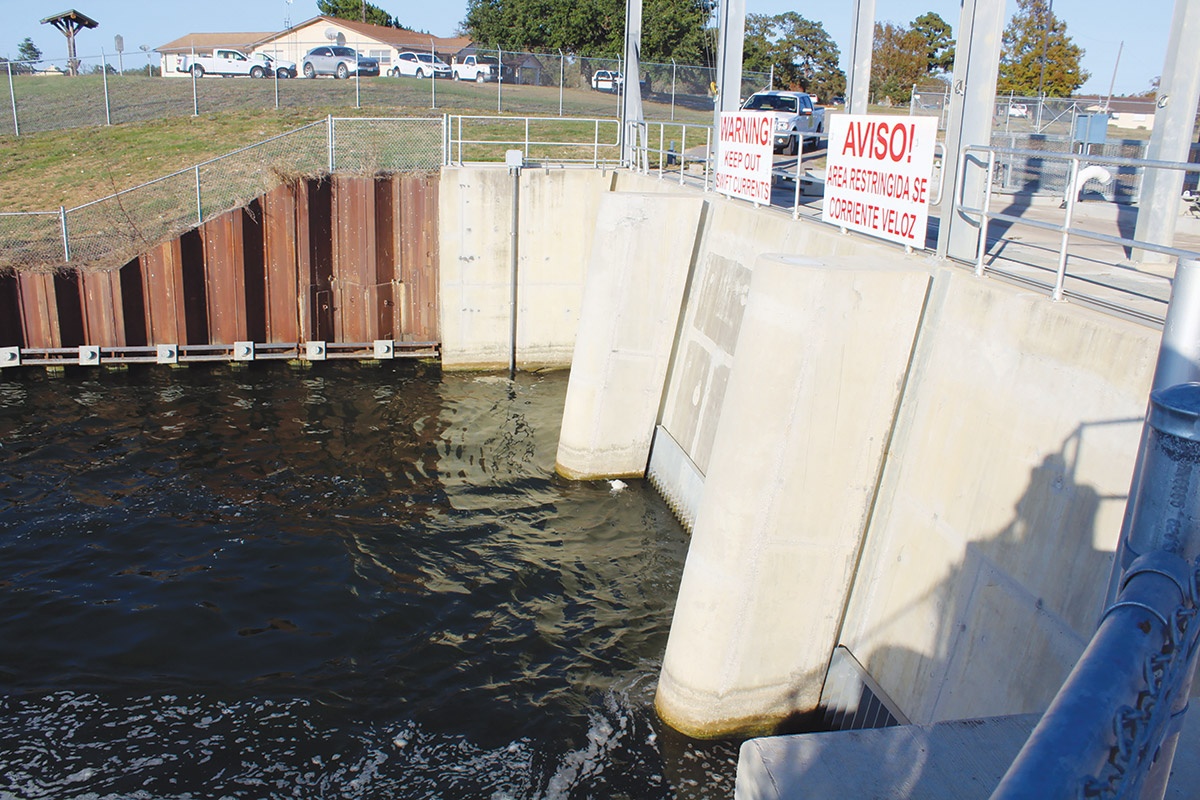
The three intakes, which receive lake water and send it down several hundred yards to the turbines, are protected by a barrier and signage to prevent boaters from getting too close.
Sam Houston Electric Cooperative
The intake area of the plant is just east of Lake Livingston Dam. Three intake gates can be opened or closed all at once or separately, depending on the flow of the river and the level of the lake. The water flows down large pipes, called penstocks, to the three turbines, which move with the flow of the water and generate power. At least one of the gates must remain open at all times to maintain the flow required by the city of Houston.
The plant operates around the clock and is protected by a series of controlled gates, cameras and security personnel.
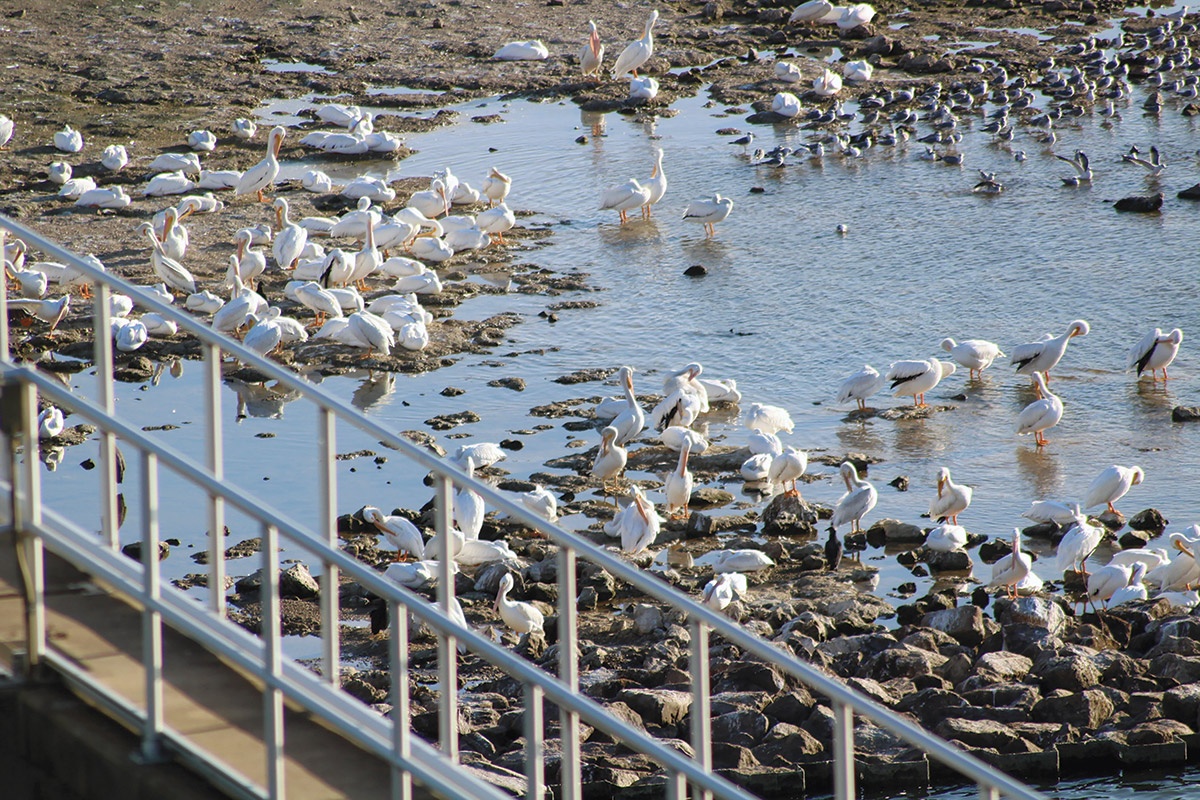
White pelicans, cormorants, egrets and herons congregate just below the park’s viewing area at the plant. With many bird species present year-round, the spot is ideal for photography and bird-watching.
Sam Houston Electric Cooperative
“The plant has two operators on shift 24/7 and two permanently assigned daytime maintenance personnel,” Williams said. “In addition we use security personnel to keep the plant secure both day and night.”
Before the plant was built, there was a viewing tower available for birders and photographers that had to be dismantled during construction. Fortunately, ETEC, TRA and the Piney Woods Lakes Texas Master Naturalists worked together to create a new park area, complete with a bird-viewing gazebo and lighted hiking trail. “The park is complete for the most part now, and public access should begin around the first of the year,” Williams said.
Oak trees and native grasses designed to attract monarch butterflies and other species of migratory and water birds have been planted in the park. From the gazebo, park users, bird- watchers and photographers will have an unobstructed view of the river below the dam, which traditionally draws thousands of white pelicans, cormorants, egrets, great blue herons and many other bird species year-round. Access to the park area will be limited to daylight hours only.


